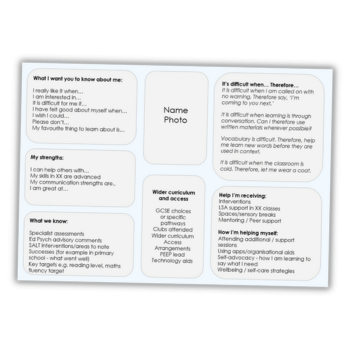Student engagement – How can we make secondary pupils WANT to engage in lessons?

Simply placing pupils in a learning environment isn’t enough to make learning happen, says Kevin Hewitson – so here's how to improve student engagement in the classroom…

It would be great if their mere attendance in your classroom was enough to motivate your pupils to learn.
It can happen. Just as with any audience, you can prime them, suggest the benefits that will come their way and create an environment and relationship that stimulates and sustains their interest.
In a school environment, the motivation to learn requires more than just compliance, doing as you are told; it requires a level of engagement, a willingness to take part in the learning.
In a managed learning environment such as a school, we need to be motivated to study and learn. Just being sent to school is not enough to motivate you to learn. Even when there is a desire to learn, there are other forces at work that influence your learning journey.
Some of these influences can distract us, just as seeing a sign at the side of the road for free ice cream could cause you to interrupt a journey.
Teachers are tasked with not only managing the learning (planning, resourcing, presenting and assessing) but also motivating learners. You do not hold all of the motivation cards, but there are ways you can bring key ones to the top at any given opportunity.
Student motivation through needs
Learning through, or as a result of a need is the type of learning we all recognise as being an effective learning driver. If overcoming a life-threatening challenge meant learning another language, you would be motivated to learn that language.
The need can be diverse and may not be obvious to others. The intensity of the need can vary too, from casual to imperative.
Furthermore, the need can be very personal and not shared, even within a very close group. Understanding pupils’ needs within a learning context is essential in teaching and a key motivational aspect.
Not all needs are good in terms of learning, though. It is recognised that we learn poorly in circumstances where we feel threatened or under stress.
When in this emotional state adrenaline is surging and your behaviour can become unregulated. Instinct or past success strategies will direct your response with little thought for rules, regulations or consequences.
As a teacher, I would safely bet you have seen such behaviour from pupils. There is a balance to be found when motivating pupils. You will often find that, in education, a reward replaces a threat.
Rewards to motivate student learning
Rewards alone are often not enough to motivate pupils, especially if said rewards, those benefits for making the effort to learn, are deferred. The issue of rewarding pupils is one that will often divide opinion. For instance, people will disagree on the type of rewards and what the rewards should be given for.
It is only natural that you should, as a teacher, create a need for learning. You can easily move to creating an environment that promotes active learning through need, rather than by reward by altering your approach.
Here are two approaches to how you may present a topic or learning activity in order to motivate your pupils, based on a reward strategy:
1. You need to learn this in order to do or to have that (the outcome)
2. In order to do or to have that (the outcome) you need to learn this
Under the direction of the teacher, the two approaches are often regarded as ‘push’ or ‘pull’ motivation. You may say there is no difference between the two, or that the difference is so subtle as to make no difference in motivating learners.
Putting the reward first, however – selling it, encouraging ownership, creating a reality – is a technique that car salesmen have been using for decades. Once you buy into a future where you have something or the ability to do something, then you are more motivated to work to achieve the reward.
Modelling the benefits of student engagement
To promote learning through need you must change from approach 1 above to approach 2 – but first establish a value on what it is the pupil will gain.
With approach 1, you are focusing on a rewards-based system, and if the reward is too distant, you end up replacing it with immediate rewards not connected to the learning – such as the ‘chocolate bar instant reward’, rather than the benefit of learning something that can be applied, or that will lead to future understanding.
Establishing before you start what student success will offer, what they will be able to do after as a result of their learning, will lead to longer-lasting motivation.
Many sporting coaches use a process of visualisation to embed motivation in their athletes. As a teacher, you must not only make desirable (and achievable) what you want your pupils to learn; you also have to model its benefits.
This is more easily achieved if you have a sound learning relationship with your pupils. Attempts to motivate without a sound relationship that involves respect will only be partially successful, as I have found out.
Engaging students in learning examples – A personal reflection
I found out the importance of a sound learning relationship when trying to motivate a pupil in my class who was quite capable of learning, but reluctant to do so because she saw no benefit to her in making the effort.
The pupil was from what is often referred to as a ‘disadvantaged background’, which is something I can relate to and empathise with, having grown up in north-east England in the 1960s and 1970s.
I tried using what I had achieved in life – even though I had failed the 11-plus – to bridge the gap between us and encourage her to at least try; to show that with effort and belief, many things are possible.
My achievements were thrown back at me. To the pupil, I was bragging, for want of a better word, about my job, home and the things I was able to do. What I had achieved was still unobtainable to the pupil, because she saw no common ground between us.
The relationship at that time was not yet strong enough, I had not created that bridge. Essentially, I had not yet met the pupil’s learning needs for engagement and motivation in my class.
A lesson learnt, and one that underlined the importance of the learning relationship in motivating pupils.
Best practices for student engagement – Motivation and compliance
You can also be motivated to learn only because others want you to do so. This is not a true need in the learning sense, but a form of compliance, not unlike that which results from threats or punishment.
The outward sign of learning through need is self-driven engagement, a self-motivated learner. The alternative to a self-motivated learner is a learner who sees learning not as a reward in itself, but only as a coerced action to be avoided as soon as possible.
The tradition in schools has been to create or stimulate the learning need through a process of encouragement often bound up in policies and practices. The school will expect to see, reward or insist upon a set of behaviours that are traditionally associated with being ready or able to learn.
By complying, the learner outwardly expresses the motivation to learn, but this is merely a set of behaviours that mimic true motivation. These learners sit quietly, face the front and obey all the rules. They do this because they are told this is how you behave if you want to learn.
While absolute compliance may work for some pupils some of the time, it rarely gets the best from either teachers or learners. Nor does this approach match – in levels of determination or passion – the need that comes from within for learning.
Igniting the internal motivation for learning is what we should aim for as teachers, if we are to achieve true pupil engagement.
Kevin Hewitson is a former teacher with over 40 years’ experience, having previously held the post of assistant principal responsible for learning strategies, and assorted pastoral and subject lead roles prior to that; for more information, visit ace-d.co.uk or follow @4C3d.
This article is an edited extract taken from his book If You Can’t Reach Them You Can’t Teach Them (Critical Publishing, £17.99).











